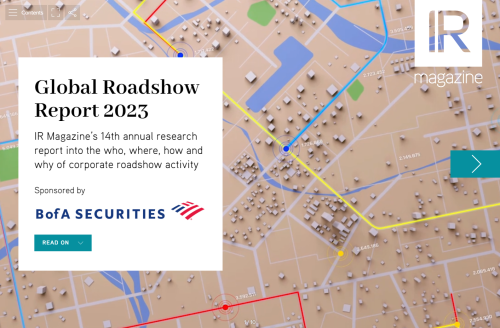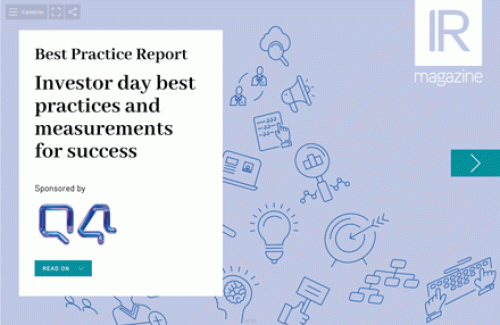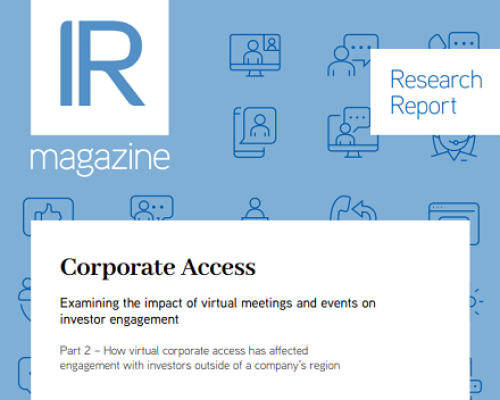IROs at mega-cap companies offer advice on managing the supply and demand challenges of investor relations
In this final segment of a three-part series (read parts one and two here), Edelman discusses results from its research into how some of the world’s most-followed companies use quarterly earnings results, social media, and major investor and analyst events to manage the increasing demand for information from the investment community.
Quarterly earnings: Amid continued efforts to enhance the process in which companies report earnings, all respondents stress that consistency is their top priority when it comes to quarterly disclosure. In terms of the press release, it’s a matter of understanding which key metrics the Street uses to evaluate performance and make the content easy to obtain and analyze. Some tips from these IROs include:
• Have consistent guidelines for press release formatting and content based on quarterly performance and the metrics that are most helpful to investors
• Where possible, streamline content in an effort to meet demands from investors and the financial media, with the use of infographics becoming increasingly popular as a means to improve disclosure
• Stay flexible – the majority of IROs cite a reluctance to pre-record their earnings calls, preferring to have the flexibility to make last-minute edits to management’s prepared remarks following initial feedback from the Street and media
• Make a concerted effort to cut prepared remarks down to 20 minutes or less, in order to provide more time for the sizable queue of sell-side analysts’ questions
• Be open to questions from all – these IROs prioritize Q&A on earnings calls based on an analyst’s understanding of the story as opposed to a specific stock rating, though many mention preferring to open and close Q&A with an analyst who has a favorable opinion on the company.
Investor days: Thefrequency with which companies host tent-pole investor events varies from one or two per year to only when there is a significant update to strategic initiatives:
• The majority of these events are hosted in New York City or at the company’s headquarters
• A typical event includes five to six speakers, with a view that any more would prevent presentations from going into enough detail
• In efforts to improve investors and analysts’ access to executive management and business leaders, a number of IR teams break investor days into two events per year, with one dedicated to the sell side and the other just for current and prospective shareholders
• Some companies offer a smaller segment of top shareholders access to management following an event. In most cases, this is either a lunch or dinner with the C-suite
• Corporate budgets are not mentioned as an issue in determining the size and scope of investor days.
Social media: Approximately half of those we spoke to use some level of social media as a means to deliver investor-focused content. It should be notedthatEdelman’sconversations reinforce thecurrent divide that exists among the IR community around the use of social media:
• IR has found success leveraging existing corporate social media platforms to amplify releases and major announcements that would be of interest to the investment community
• Several respondents report that the creation of a dedicated IR Twitter account yielded limited success, preferring to post IR content on a general corporate account
• Most of the positive feedback from broadcasting through social channels has come from the financial media.
Other articles in this series:
Blue-chip best practice: Part one – team structure and skill sets
Blue-chip best practice: Part two – buy and sell-side interactions
Ted McHugh is vice president of financial communications & capital markets at Edelman










